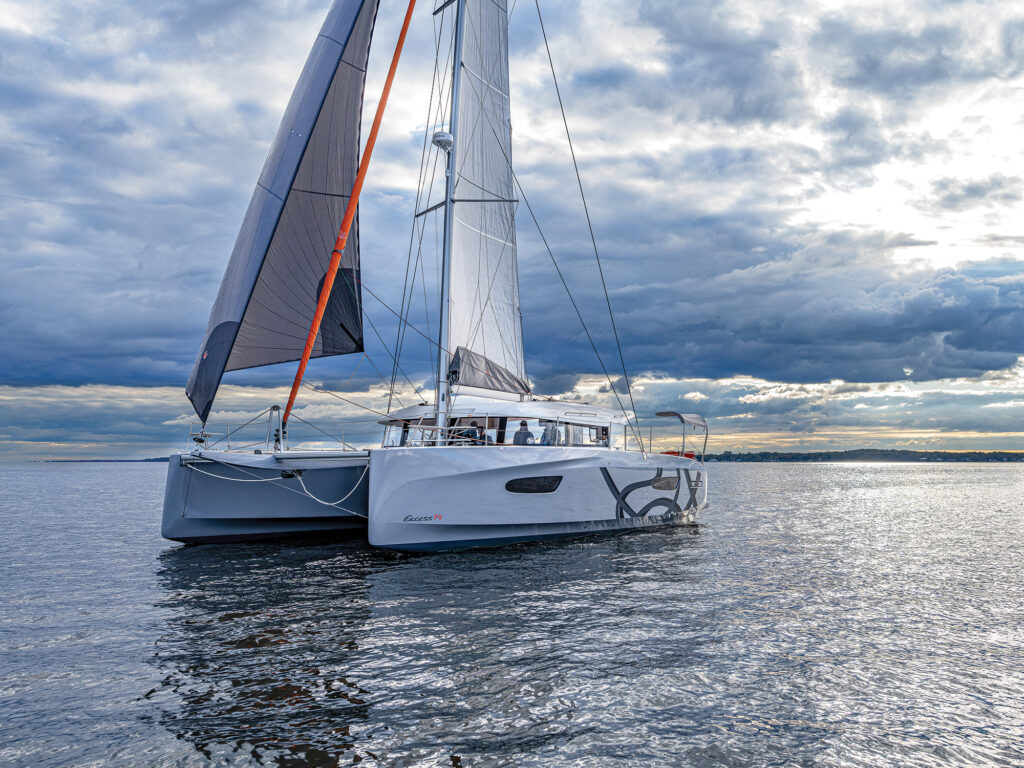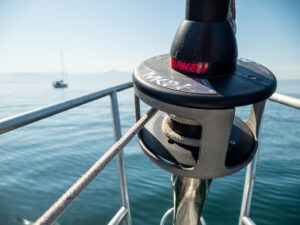
Stories about being becalmed are legendary in literature of the sea. Wars have been lost because flotillas of warships were unable to advance.
For modern-day sailors, a lack of wind is usually only frustrating. Schedules are ruined, the engine is used more than it should be, and morale sinks when sails flap. Recently, during a 37-mile passage on Chesapeake Bay, we were about halfway to our destination when the wind died—and then my electric motor came to a stop after 30 minutes. The only option was to keep sailing. The next six hours required patience, not only for me, but also for my two new-to-sailing crew, who feared the prospect of drifting at night.
Drawing on many years of racing in very light or nonexistent wind, I approached our situation methodically. The first step is to adjust your attitude and accept the fact that it is going to be slow-going.
I set short-term milestones. For example, I asked one crew to set his stopwatch to see if we could reach a channel buoy in 30 minutes. Happily, we arrived at the targeted mark with two minutes to spare. Progress. I repeated the pattern by setting new goals, and everyone was happy as we made each target.
In light wind, sails need to be adjusted by easing everything out to create more shape in the sail. I eased the outhaul a generous amount, let up the downhaul, and slacked the halyard a few inches. I adjusted the headsail halyard so that the luff had some slack. (It is OK to have wrinkles in the sails.) I also eased off the backstay to allow the headstay to sag about 6 inches. The idea is to create draft, or curvature, in the sails.
To help keep the sails set properly, heel the boat over by asking the crew to sit on the leeward side. The sails keep their shape better when heeling to leeward. This strategy also helps to keep the crew sitting in the widest part of the boat. Pushing down either the bow or the stern slows the boat.
A helpful test is to sail with an angle of heel that allows you to let go of the tiller or wheel. If the boat is balanced, it will sail itself. If the boat heels too far to leeward, then you will create windward helm where the boat wants to round up toward the wind. Conversely, if you heel to windward, the boat will create leeward helm and will bear away from the wind. If you hear water slatting under the transom, then your weight is likely too far aft. The goal is to keep crew weight centered to reduce the wetted surface of the hull, thereby reducing friction.
Steer as little as possible. Every time you move the rudder, you slow the boat. And sit in a comfortable position so that you can see the wind on the water and the approaching waves. I ask my crew to hold the boom in waves to keep the sail from flopping around. This helps maintain a boat’s momentum.
If there are other boats in your vicinity, try to sail faster than they do. Experiment by changing course, adjusting your sails, or moving your crew to heel more. Make one adjustment at a time, to tell what works and what doesn’t. I find weight on the bow to be particularly slow. Small adjustments can make a big difference.
When sailing to windward, sail a slightly low course to almost a close reach, to get the boat moving. Once you have some speed, you can sail a higher course.
If you are sailing on a downwind course, reach up to create apparent wind in your sails. Once a boat starts moving, it creates its own (apparent) wind, and speed increases.
To help build momentum and steer straight, head toward an object on land or an anchored vessel. References on land and a compass are useful tools.
Stand up in your boat to study the wind patterns on the water. If you see a dark patch, this indicates more wind. You can feel the slightest zephyr on your neck or the back of your hand. Look around at other boats to see if any have some wind and are moving. Steer for a set of clouds—often, there is wind under a cloud.
Avoid maneuvering when the boat is stopped. The best moment to tack or jibe is when the boat is sailing at full speed and you are in a relatively strong puff of wind. And turn the boat slowly. The faster you turn a boat, the slower it’ll go.
Keep everyone comfortable, and try to protect the crew from the sun. Dehydration saps energy. Make sure everyone is drinking water, is wearing a hat and sunglasses, and has applied sunscreen. Periodically ask crew to switch jobs or positions. Ask each person to tell a story. I’m always amazed by the stories people share when they are on the water. One leads to the next, helping time to pass and spirits to improve.
During our sail to my dock in Annapolis, Maryland, we were able to make 16 miles in five hours. The final mile seemed to be the slowest. We tied up the boat just as the late-afternoon sun dipped the horizon.
We all slept well that night. And I bought a new engine the following week.








